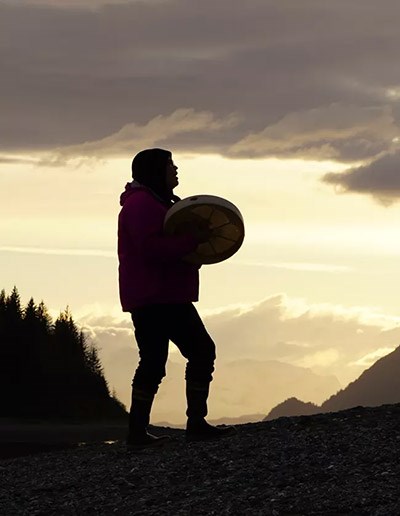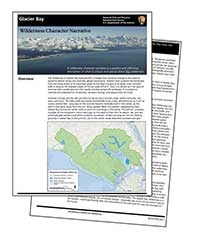

Click image for an interactive map! The Wild SideTowering glaciers, amazing wildlife, spectacular mountains...Glacier Bay is overwhelming in its beautiful scenery and magnificent sights. Yet equally remarkable is what we do not see...buildings, roads, bridges, towers. Most of Glacier Bay will never be developed, for much of Glacier Bay has the highest conservation protection our country can give to wild lands: wilderness


Photo by Ben McLuckie Glacier Bay Wilderness as HomelandThe concept of wilderness as defined in the Wilderness Act is a modern construct that emphasizes the value of places with little evidence of human change. But the continued relationship of the Huna Łingít with their Homeland is as much a part of the wilderness character of Glacier Bay as the glaciers, the bears, and the opportunity for an unconstrained experience. Perpetuating physical and spiritual connections between traditional people and their Homeland ensures that the Glacier Bay wilderness remains a living community. The Huna Łingít have known Glacier Bay as their Homeland since time immemorial. Read more about Glacier Bay Wilderness as Homeland in this NPS article. 

Glacier Bay Wilderness Character Narrative
By designating an area as wilderness, we choose to manage it differently. There is considerable thought put into keeping wilderness truly wild. Protecting wilderness goes beyond caring for the landscape. Wilderness protects areas as places where humans exercise humility and restraint. Wilderness provides sanctuaries for wildlife and renewal for humans, offering reservoirs of hope in challenging times. Learn how we manage Wilderness in Glacier Bay.
In Glacier Bay’s wilderness, we have the opportunity to be overwhelmed by sights of glaciers, wildlife, and mountains. Yet there is so much more to wilderness than what catches our eye. Here we can be a part of something larger. We can immerse ourselves in wild lands. We can connect with wilderness, and carry that sense of wildness within us.

Glacier Bay Wilderness as Homeland
Glacier Bay is Homeland for the Huna Łingít, learn more about the importance of Wilderness to Homeland. |
Last updated: April 22, 2025

